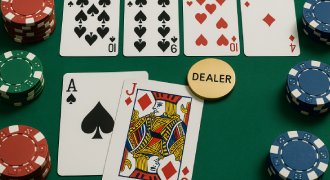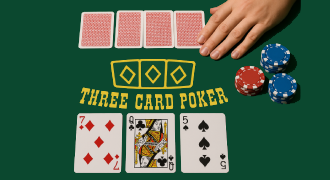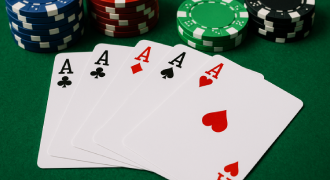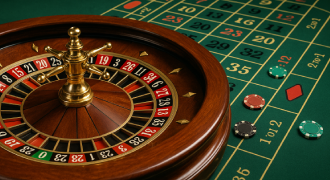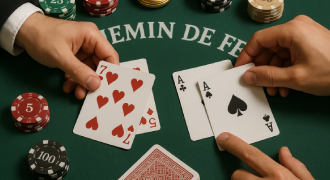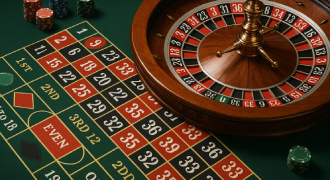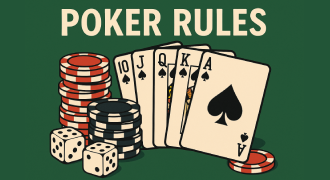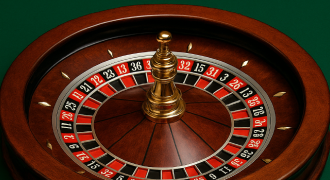Baccarat Odds – A Guide to Payouts and Probabilities
Welcome to our table, where totals are clear, payouts post instantly, and the rules never change mid-shoe. This article is our in-house walkthrough of the numbers behind your favorite game: how results distribute, how payouts map to likelihood, and how small rule tweaks move the math. By the end, you’ll know exactly how baccarat odds shape smart choices, and you’ll read every felt note—commission, side bets, and variants—with confidence.
You’ll see quick reference tables, examples we use when training new dealers, and plain answers to common questions like “does baccarat have the best odds”. Whether you prefer a calm live studio or a quiet digital lobby, the probabilities are the same—only the pace and presentation change.
Why Knowing Baccarat Odds Is Important
Understanding likelihood helps you set expectations. Baccarat offers three core outcomes—Banker, Player, and Tie—and each appears at a different rate over long stretches. When you know how often an event shows up, you can size stakes sensibly, avoid overexposure on rare results, and keep your rhythm steady from shoe to shoe. That’s the foundation of a dependable approach in any casino room.
Odds knowledge also supports discipline. With a clear picture of return and house edge, you’ll lean on wagers that carry better value and keep the high-variance extras small. In our pit notes, the guests who ask about baccarat odds casino details are the ones who typically pace themselves best, because they treat each decision as a measured step rather than a guess.
- How understanding odds improves your betting choices
You’ll favor outcomes with stronger long-run math, recognize when a payout is compensating for rarity, and use side bets sparingly. - The role of odds in long-term results
Over many shoes, your outcomes mirror the underlying probability. Knowing the numbers turns streaks into context, not signals.
Player vs. Banker vs. Tie – Comparing Winning Chances
Every round starts with the same race to nine, but the two main hands don’t win at equal rates. Because of the rule order—Player evaluated first, Banker second—Banker gains a small structural advantage across the shoe. Tie arrives far less often than either main outcome, which is why its payout climbs to compensate.
That spread in frequency is the heart of baccarat odds of winning comparisons. You can enjoy every type of wager; the key is to size them according to their likelihood. As the host, we display those differences on the felt and in the info panel so you always see payout alongside probability.
Why the Banker Wager Offers the Best Probability
Banker’s procedure benefits from reacting to Player’s draw. Over a large sample, baccarat banker odds edge out Player’s by a small margin. Classic tables balance that with a commission on Banker wins; no-commission rooms remove the fee but adjust a specific outcome to keep returns aligned. The advantage isn’t dramatic, but over time it’s noticeable enough to matter.
Practically, many guests choose Banker as their default and use Player for variety. That habit doesn’t guarantee a result, but it uses the tiny arithmetic edge that’s already built into the chart. When you’re building a plan around odds of winning baccarat, that’s a straightforward place to start.
How Frequently Does a Tie Occur?
Tie arrives much less often than the two main outcomes—roughly one hand in ten in common multi-deck setups. That low frequency explains the elevated payout (often 8:1). Tie is exciting, and a well-timed chip can brighten a session, but most players treat it as an accent rather than a base bet. If your goal is steadier sessions, keep Tie small and occasional.
We label the Tie payout on the felt and in the rules overlay. When you ask “what are the odds in baccarat” for Tie specifically, the short answer is: uncommon, high return, higher variance.
Baccarat Odds Compared to Other Casino Games
Against other table staples, baccarat is friendly. The main outcomes carry a modest house edge, and the rules are fixed—no mid-hand decisions that can lower long-run results. That comparison is why you’ll hear guests bring up baccarat odds vs blackjack. Blackjack can offer strong returns in perfect play, but execution matters; baccarat’s engine keeps the procedure consistent for everyone, regardless of experience.
In short, the baccarat odds create a comfortable, transparent environment: simple choices, visible payouts, and a math profile that rewards calm pacing instead of complex reactions.
House Edge by Bet Type Explained
House edge expresses the casino’s average take on each wager over time, shown as a percentage of your stake. In classic eight-deck layouts, Banker carries the lowest edge, Player follows closely, and Tie sits much higher. No-commission tables keep the drawing rules the same but adjust settlement on a specific Banker result to maintain similar returns.
Reading the edge is like reading the weather: it doesn’t tell you what the next hand will do, but it helps you dress for the session. The lower the edge, the more comfortable it is to make that bet your routine pick.
Payout Charts and Probability in Baccarat
Numbers are easier to use when you see them side by side. Here’s a quick reference with typical payouts and long-run behavior in standard punto banco rooms.
Core Bets: Payouts & Likelihood (typical multi-deck)
|
Bet |
Typical Payout |
Long-Run Behavior (overview) |
Notes |
|
Banker |
1:1 (commission applies on classic tables) |
Wins slightly more often than Player |
Small structural edge due to draw order |
|
Player |
1:1 |
Trails Banker by a small margin |
Simple settlement, no fee |
|
Tie |
8:1 (sometimes 9:1) |
Occurs far less often |
High return, high variance |
- Typical payouts across popular game versions
Classic rooms list Banker at 1:1 with a commission; no-commission rooms post an exception (e.g., Banker 6 pays half). Tie and pair side bets appear when enabled by the provider.
- The real probabilities behind each bet
The main hands trade wins most of the time; Tie remains the rarest. Those ratios are stable enough that training materials like “wizard of odds baccarat” breakdowns align closely with what we audit in live studios.
This is also where baccarat payout odds meet practical play. Payout compensates for rarity; your job is to decide how much of your stack you want riding on rare events.
How Different Baccarat Variants Affect the Odds
Every variant keeps the same values (A=1, 2–9 face value, 10/J/Q/K=0) and the same last-digit total. What changes is settlement on one or two outcomes or the staging of the game. Here’s how those choices touch baccarat casino odds. Some tables alter ties, others tweak the Banker settlement, and a few simply change pacing or presentation. Those small levers subtly reassign probability weight to particular results, shifting expected value by tenths. Understanding which lever a variant pulls helps you pick limits, manage pace, and align expectations before chips drop.
Punto Banco Odds Overview
Punto Banco is the standard: fixed drawing rules, simple even-money payouts, and a small commission on Banker wins. This is the baseline for most tables, both land-based and online. When you read training posts or see card game odds charts, they’re usually referencing this format. Because procedures never shift by seat or mood, long-run figures remain stable and widely published. New players can benchmark strategies against these totals, then compare any variant’s deviations precisely. Treat Punto Banco as your measuring stick: if a rule deviates here, expect the house edge or volatility profile to move.
No Commission Baccarat – Real Advantage or Not?
No-commission tables remove the 5% fee but add a posted exception, such as paying Banker 6 at half. That tweak preserves the long-run balance. It isn’t a free boost; it’s a faster settlement model with a different adjustment. Read the banner before you sit so your expectations match the felt. Compare posted paytables against classic 0.95:1 Banker returns to understand the trade. Speed and clean even-money wins feel great, yet the half-pay outcome recurs often enough to matter. If you value pace, choose it; if you value raw efficiency, standard Banker remains strongest. Either way, confirmation prevents surprise mid-shoe later.
EZ Baccarat House Edge Breakdown
EZ Baccarat often replaces the commission with a specific push condition (for example, Banker wins with a particular total may push). The net effect is similar to classic math. If you’re tracking odds of baccarat by table, log the EZ note in your session sheet so you remember what will happen on that rare result.
Also note whether Dragon 7 or Panda 8 side bets appear, because their paytables change volatility substantially. While pushes reduce paid outcomes, they avoid commission handling and keep dealing brisk. Record which totals push, confirm decks, and check Tie odds. These small parameters collectively determine pace, fairness, and expected value.
Odds in Chemin de Fer and Baccarat Banque
Chemin de Fer and Banque are player-banked styles. They preserve the race to nine but add a social layer: the bank can be held by a player, and certain decisions happen face-down. Because the core totals and third-card logic do not change, the underlying game casino odds remain in the same neighborhood; the experience feels different because the dealing ritual and etiquette differ.
Table culture matters here: negotiation, turn order, and who accepts the bank can influence tempo and psychological pressure. Expect longer pauses, occasional consultation, and more ceremony around reveals. If you enjoy communal drama and strategic discretion, these variants shine. If you prefer quick, mechanical resolution, stick with Punto Banco sessions.
Mini Baccarat – Do the Odds Change?
Mini compresses the layout and often speeds up the countdown, but it does not rewrite the chart. The baccarat card game odds you rely on at a full table apply here as well. What changes is tempo, which means you should keep your base unit small while you adjust to the quicker cadence.
Faster cycles multiply decisions per hour, so bankroll strain can arrive sooner if sizing creeps up unnoticed. Use a timer or shoe markers to pace yourself, and consider micro-breaks. The compact layout improves visibility for newcomers, while veterans appreciate swift dealing. Remember: unchanged math doesn’t offset increased volume; discipline matters.
Side Bets in Baccarat: Risk vs Reward
Side bets add flavor—and volatility. They pay high when a specific event occurs, but their house edge is typically higher than the main outcomes. If you enjoy them, great; treat them as seasoning, not a main course.
Dragon Bonus, Panda 8, and Other Popular Side Bets
- Dragon Bonus: Pays on certain winning margins or specific totals.
- Panda 8: Often pays when Player wins with a three-card 8.
- Pairs (Player/Banker, Perfect Pair): Pay when the first two cards form a pair, with suited pairs returning more.
We print these on the felt with clear payout labels. Always check availability; some live providers include them, others keep the table clean and simple.
Are Side Bets Ever a Smart Choice?
They’re fun in small doses and can lift a session when they land. Mathematically, they’re worse value than Banker or Player; that’s why we recommend tiny stakes. If your priority is maximizing steadiness, stick to the main outcomes and treat side bets as optional entertainment.
Betting Strategies and Their Effect on Odds
Systems arrange stakes; they don’t change baccarat game odds. Use them to pace your bankroll, not to “beat” the math. If a sequence pushes you beyond your limits, it’s the sequence that should stop—not you.
- Martingale – Can It Really Beat the Numbers?
Martingale doubles after losses and resets after a win. It feels elegant—until a cold patch hits table limits or bankroll ceilings. It can smooth short chops but carries real blow-up risk. The underlying baccarat odds casino don’t bend just because stakes rise.
- Fibonacci – Safer Betting Progression or a Myth?
This negative progression climbs more slowly (1-1-2-3-5-8…), backing down two steps after a win. It’s easier on limits than doubling, but it still escalates during bad runs. Treat it as a pacing tool and keep units small.
- Paroli – Winning Streak Management
Paroli presses after wins (often for two or three steps) and resets after a loss. It rides good patches while containing damage when the shoe turns choppy. It works best when you set a strict number of presses and honor it—no freelancing on the fourth step.
The Best and Worst Bets According to Mathematics
Mathematically, the Banker wager is the best-value core bet in classic baccarat, carrying an average house edge of about 1.06% (thanks to the 5% commission); in No-Commission formats, the Banker’s edge rises to roughly 1.46%, narrowing the gap with Player (≈ 1.24%).
The clear worst routine choice is Tie, which commonly sits around 14%+ house edge, despite eye-catching payouts. Most side bets (e.g., Super 6 at 12:1 or 15:1) deliver even higher edges and should be used sparingly, if at all. Exact percentages vary by decks and posted paytables, so always check the table card before you play.
- Which bets provide the most value?
Banker (with its commission or posted exception) and Player are the staples. Over time, they deliver the most comfortable blend of probability and payout. - Which ones drain your bankroll the quickest?
Tie as a main plan and most side bets. They pay more because they land less; keep them small and occasional.
If you like checklists, write a mini baccarat strategy chart for yourself: “Banker default, Player for variety, Tie tiny.” Simple to follow, hard to misuse.
Online vs. Land-Based Baccarat Odds Compared
Same rules, same deck math, same returns. Live studios add cameras and countdowns; land-based rooms add atmosphere and chips you can hold. Your outcomes hinge on the underlying chart, not the setting. The one practical difference: online tables often provide an easy rules overlay and on-screen statistics; use them to track pace and keep your plan steady.
When comparing baccarat odds casino across venues, focus on commission policy, Tie payout (8:1 vs 9:1), deck count, and side-bet availability. Those four lines tell you more than any tote board.
Try Baccarat for Free – Risk-Free Practice
Our RNG rooms mirror live layouts. Practice there to learn unit sizing, re-bet timing, and your preferred cadence without pressure. Free sessions are also perfect for testing whether a progression (like Paroli) fits your temperament. When you step into a studio table, everything will feel familiar.
Play Baccarat Online – Real Money, Real Winnings
When you’re ready, choose a limit band that matches your budget and a ruleset you understand. Confirm the commission line on Banker, check Tie payout, and keep a steady base unit. Real bets don’t change the baccarat odds of winning —they just add adrenaline. Let discipline, not emotion, set your speed.
Learn the odds in baccarat before you start playing
A two-minute read of the felt saves confusion later. Verify: commission or no-commission model, Tie payout, deck count if posted, and side-bet list. Those details anchor expectations and keep your session calm. This is practical prep for anyone who asks, “is baccarat the best odds” - the fair answer is: baccarat is friendly, and your experience improves when rules are clear.
FAQ
What are the actual odds of the Tie bet?
Tie shows up much less often than Banker or Player, which is why the payout is high. In common multi-deck shoes, expect roughly one Tie in about ten to eleven hands on average, with natural variance around that rhythm. That rarity is the reason Tie belongs in the “occasional” column for most plans.
Why is the Banker statistically the best bet?
Because the procedure evaluates Player first and then resolves Banker with that information, Banker enjoys a small structural advantage over long samples. Classic commission trims the edge so returns stay balanced.
How does commission reduce payouts?
On classic tables, Banker wins pay 1:1 minus a small fee. That fee is the mechanism that keeps the average return aligned with the game’s structural advantage. No-commission rooms remove the fee but adjust a specific outcome to reach a similar long-run result. In either case, the purpose is fairness and transparent accounting.
Do betting systems work in the long run?
They manage stakes; they don’t change card game odds. Progressions can smooth or amplify swings within your limits, but the underlying chart and house edge decide the average. Use systems as pacing tools, not as promises.
What’s the probability of consecutive wins or losses?
Streaks happen naturally. Because each coup is an independent event within the shoe’s composition, you’ll see clusters of Banker or Player wins. Your best response is pre-set: steady unit size, scheduled pauses, and no chasing—habits that survive both hot and cold stretches.
Does baccarat give better odds than blackjack?
It depends on the blackjack rules and the player’s skill. Perfect blackjack play in favorable rules can be excellent; imperfect play shifts the return quickly. Baccarat’s appeal is consistent execution: the table handles the choices, and you focus on selection and sizing.

